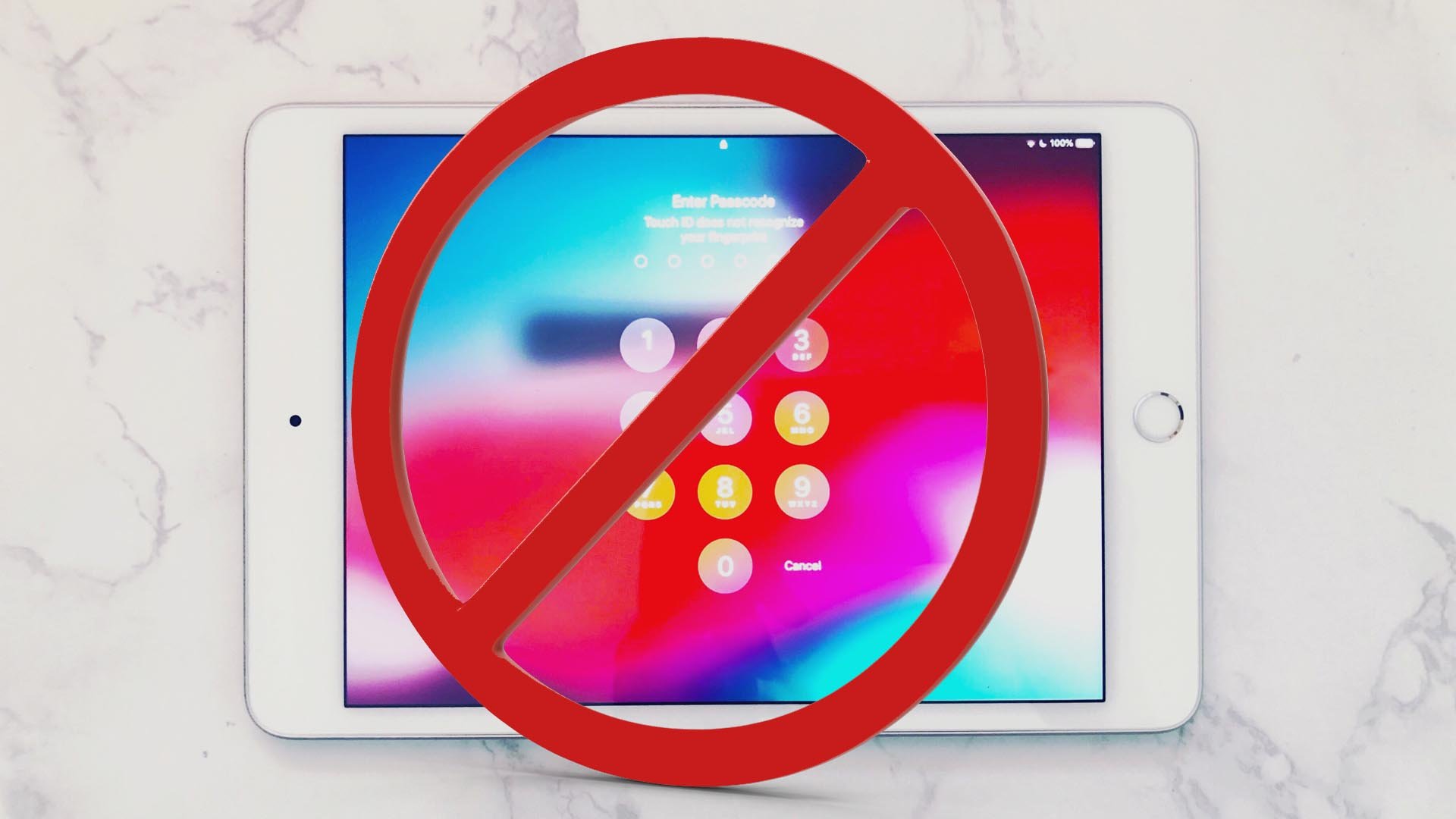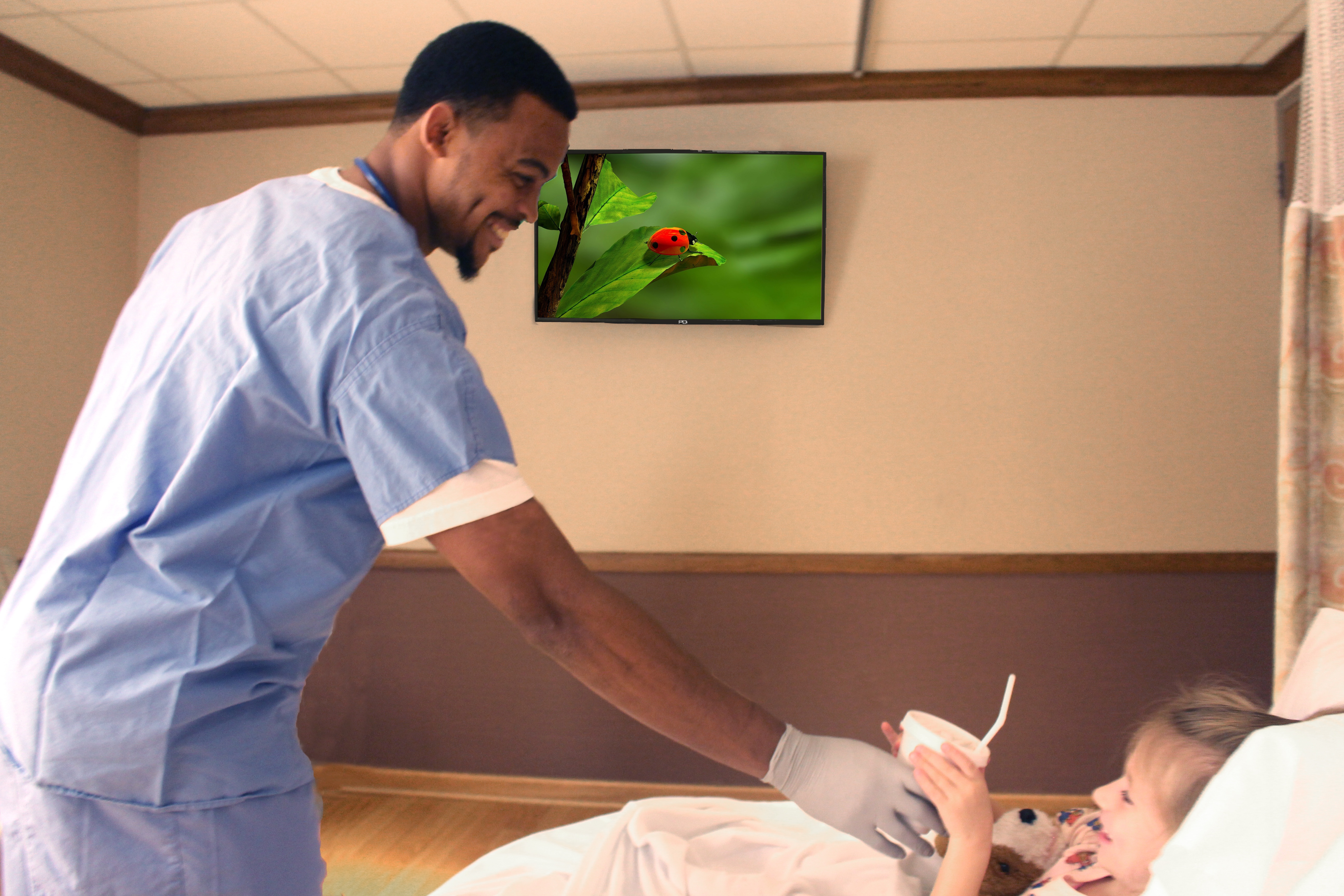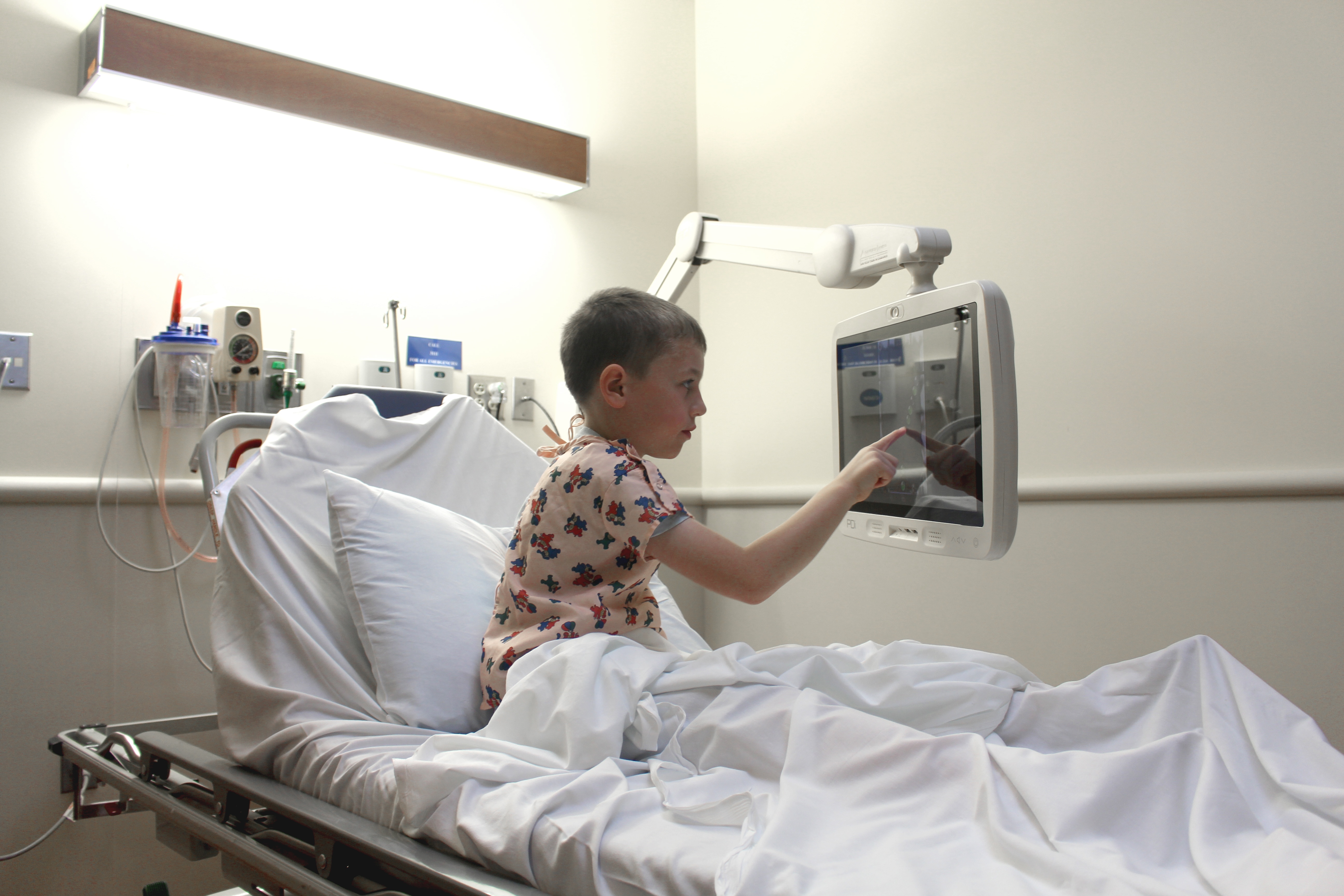1 min read
Why iPads are Bad for Patient Experience and Patient Safety
Updated December 10, 2024 by Cat Saettel Patients can easily feel lonely during infusion therapy or a hospital stay. Healthcare organizations can...

Previously, we discussed the experience of a large-screen footwall patient TV. Here, we will dicuss the emergence of consumer tablets used in the patient room to improve patient engagement.
To bridge the gap of the healthcare footwall TV, patient tablets are sometimes given to the patient when they are admitted. This allows the patient to access the interactive patient system “wirelessly” from their bed. It successfully solves the footwall gap, and privacy issues. It provides a more personal experience with an easy to navigate interface for the patient.
A patient tablet with touch screen features opens up the limitations of restrictive pillow speaker buttons to the tv. This allows the patient to access the entertainment or information they want conveniently.
While this method is definitely a step in the right direction for patient engagement, it is not a bulletproof measure. If not managed well, tablets can add to hospital costs and risks to patient health.
Hospital-issued consumer tablets are flexible and can be shared with guests and patients alike. The flip side of the coin is tablets can be easily dropped, damaged, or stolen. Those considering utilizing patient tablets to improve patient engagement will want to consider acquiring very sturdy and cleanable cases. They should also develop a process to manage the patient devices so none are lost when the patient is discharged.
Another looming risk associated with the patient tablets is ensuring they are continuously powered. Consumer reports of leading tablet brands show that when these devices are heavily used their batteries drain quickly. If hospital aides are not requested to plug the device in, the patient may try to charge the device themselves. This could expose them to a fall risk or hospital injury.
Additionally, there are very few tablets on the market made with the same regulations placed on a UL certified healthcare-grade tv. They have precautions like low-voltage safety features, to protect patients who have IV's placed and heart monitors attached. They also utilize anti-microbial coatings to decrease germs on devices.
Conventional tablets and smart phones can carry more bacteria than a toilet seat. They do not have the stamina to hold up to constant healthcare cleaning routines. Without healthcare-grade regulations in place, consumer tablets have the potential to carry germs. They may also be susceptible to damage from rigorous cleaning required everyday.
There are risks with tablet usage, but moving in this direction can transform the patient experience to improve patient engagement.
What are some other positive or negative aspects of bedside patient tvs? Let us know what you think in the comments below!

1 min read
Updated December 10, 2024 by Cat Saettel Patients can easily feel lonely during infusion therapy or a hospital stay. Healthcare organizations can...

Part 1 of "Different Angles of Patient Engagement" Blog Series In an effort to mirror the average patient's home environment, many healthcare...

Part 3 of "Different Angles of Patient Engagement" Blog Series Previously, we discussed the experience of a large-screen footwall patient TV and ...